New Year flamingos
Happy New Year flamingo followers!
The month of resolutions and expectations. I have spent the past week or so ploughing through lots of data (mainly in the form of photographs of birds standing next to other birds) and I thought it would be nice to share some of these pictures from my project and how I am analysing them. I am pretty sure many of the folks who see me about think I am getting a PhD in bird photography but there is method in the "madness", I promise! So why so many pictures? Well the joy of using flamingos at places like Slimbridge for research is that they are held in big groups and this makes them behave more naturally than say if there was only a pair of them, for example. The downside is that recording this behaviour if I were to use simply a pen and paper would see me pulling my hair out. So a photographic record of who is doing what and where is really useful. Thank God for the digital camera, that's what I say. I think I would be bankrupted if we were still in the days of "old school" camera film and developing!
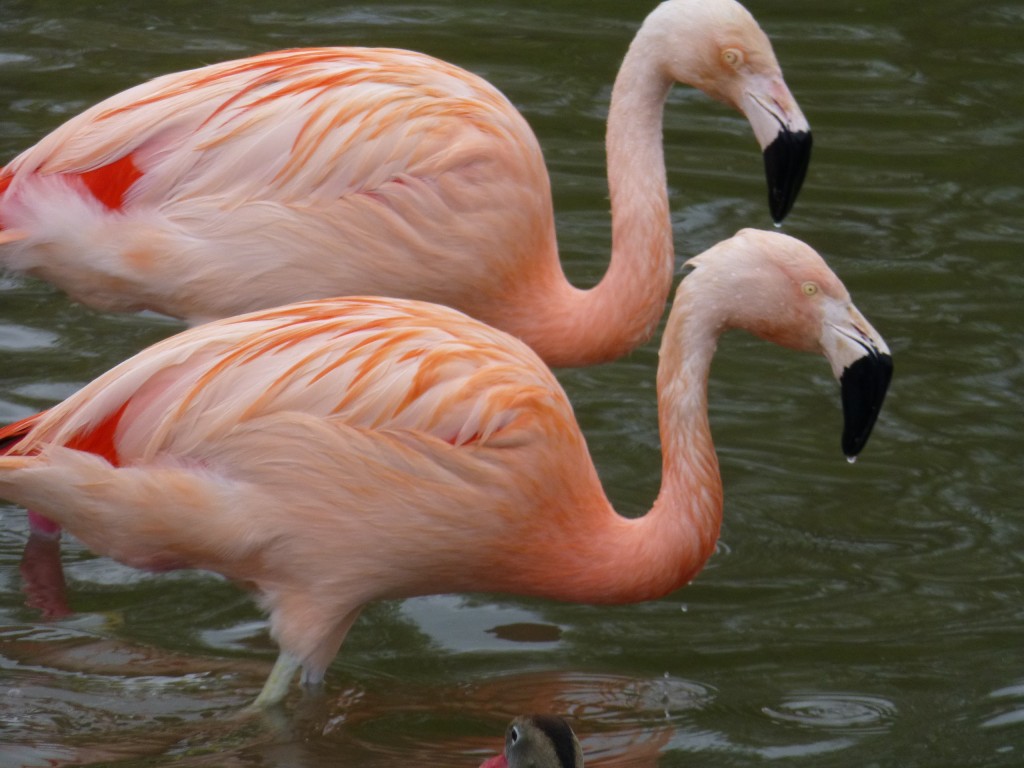
So in a big flock, looking at individual groups is more easily achieved if the group of birds is recorded in that moment in time. And then I can spend many (happy?!) hours staring at photographs of flamingos, which normally seem to show birds dripping wet in the rain I hasn't to add, to work out how consistently the same birds appear next to each other. Hence the massive number of photos I am collecting. I have to be able to see whether or not "bird A" and "bird B" are seen together more often than could occur just by chance. And a long-term study, like that of a PhD, provides the best way to test this.
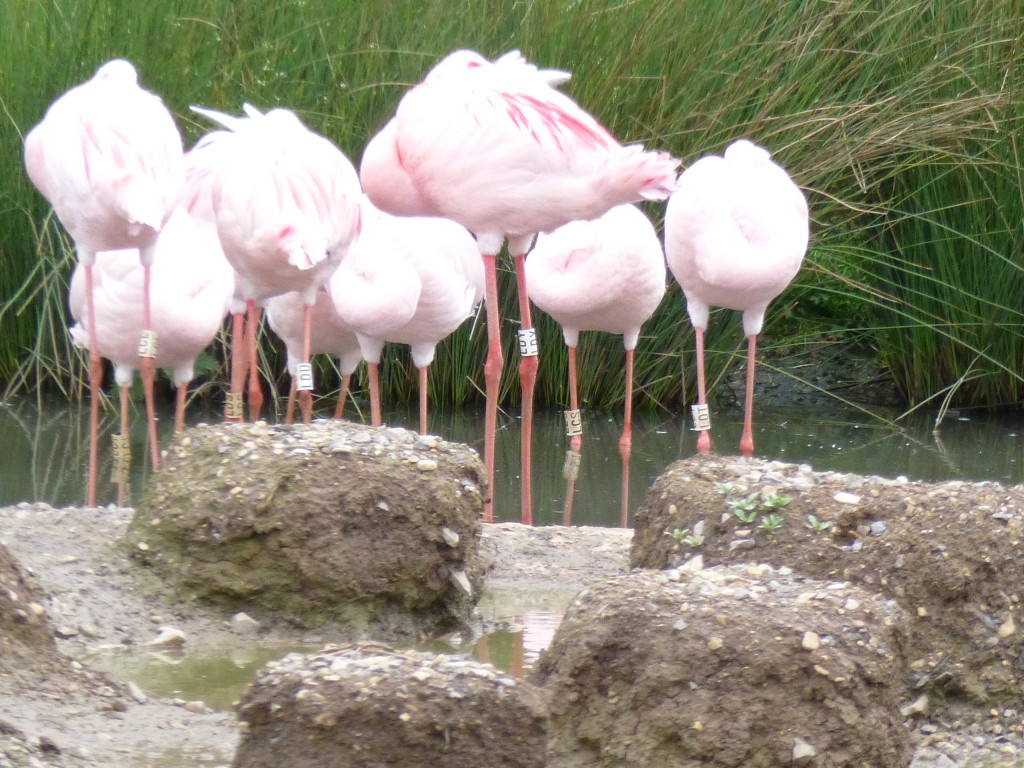
Who likes to be where and why is very important. We know that animals in social groups like to chose who they stick close to. Think about how twitchy you get when someone invades your personal space and you're not too comfortable with that happening. It is important that birds can decide what they do with whom and when. Especially when it comes to making more flamingos! So the happy couple, illustrated below, is a lovely example of the good care and fulfilling environment that WWT provides for its birds. Strong and stable relationships help animals life longer. This is a proven fact in both people and non-human animals. The long lifespan of flamingos means we need to keep their social lives active for many, many decades.
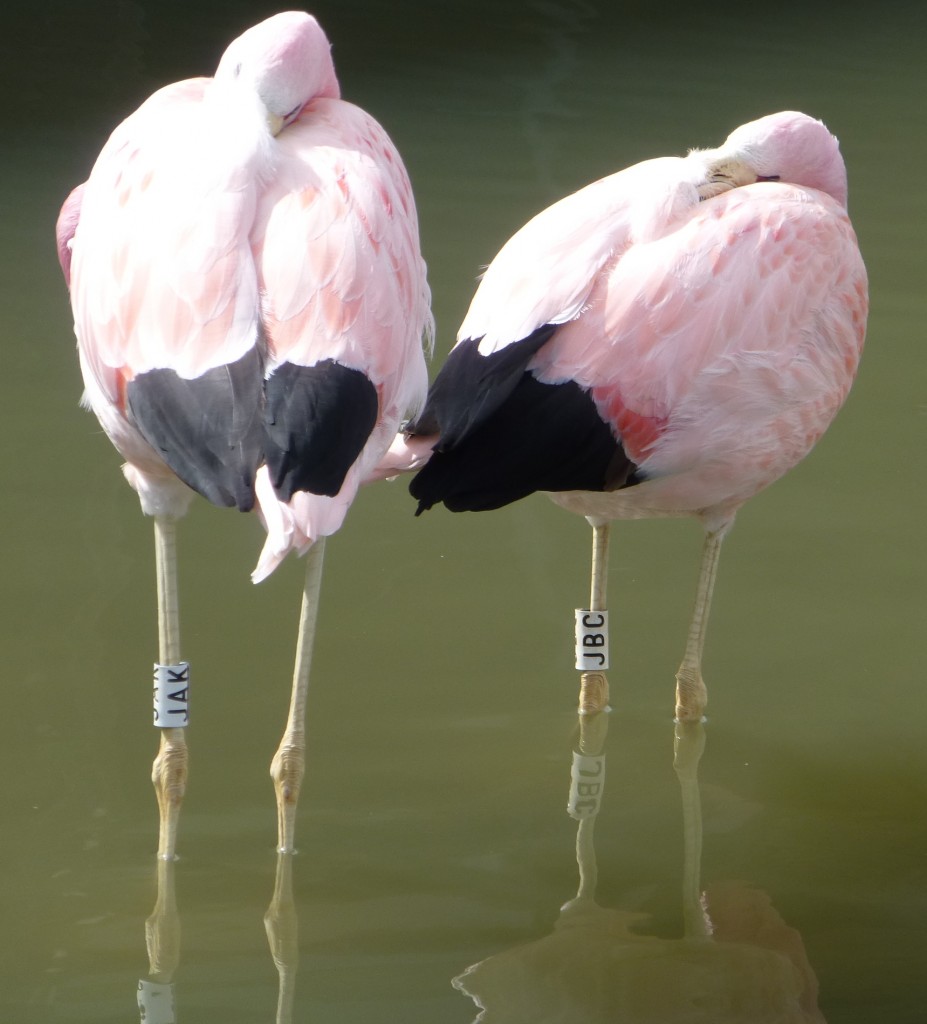
The joy of studying the birds in captivity was brought home to me by the photo below. I am very lucky that many of the birds are ringed and this means they have discernible identities. I am even more lucky that I am observing a relatively tall animal; it means they stand above the vegetation in their enclosures and can still be recorded! The only time this idea falls apart is when they go to sleep on one leg... and tuck up the leg with their ring on.
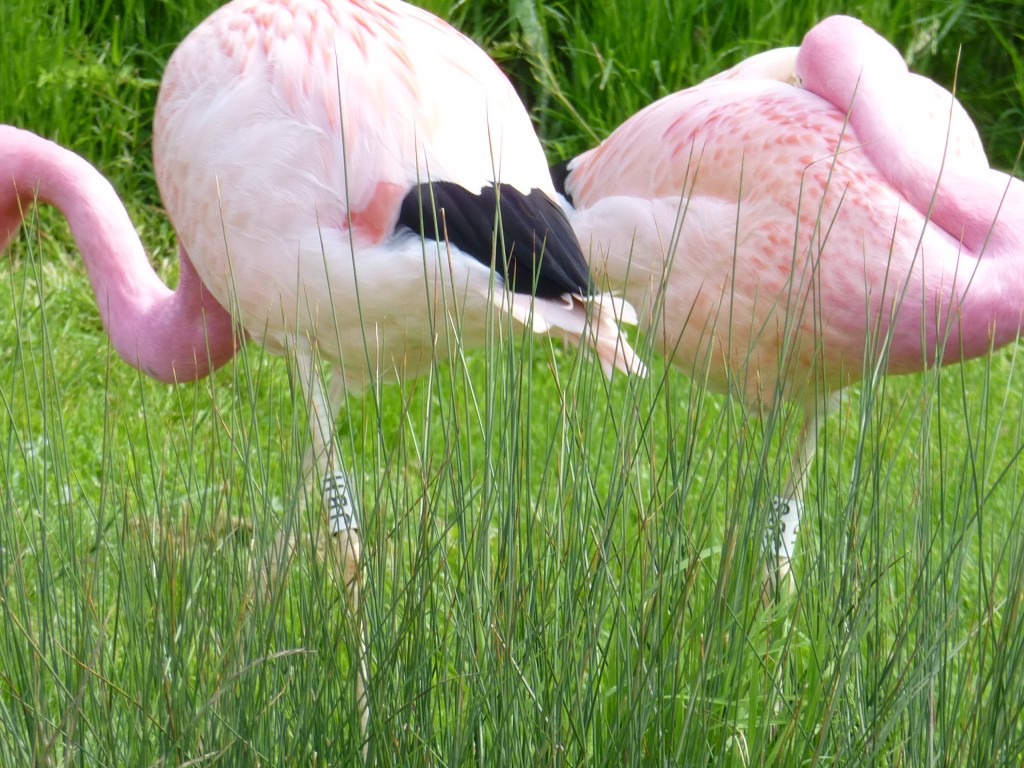
It is interesting finding out about the different personality of each flamingo, and this is something that I will focus on more in the coming year. Mr James, for example, that most favourite of flamingos (I know that's not very scientific of me!) has a real independent streak. The thing that baffles people about flamingos, in my mind, is that they look so very fragile and vulnerable but actually they are tough old cookies. Tough and old being very true in the case of Mr James, who seems to like nothing better than shoving other birds out of the way and is often to be found "doing his own thing" indifferent to what is going on around him.
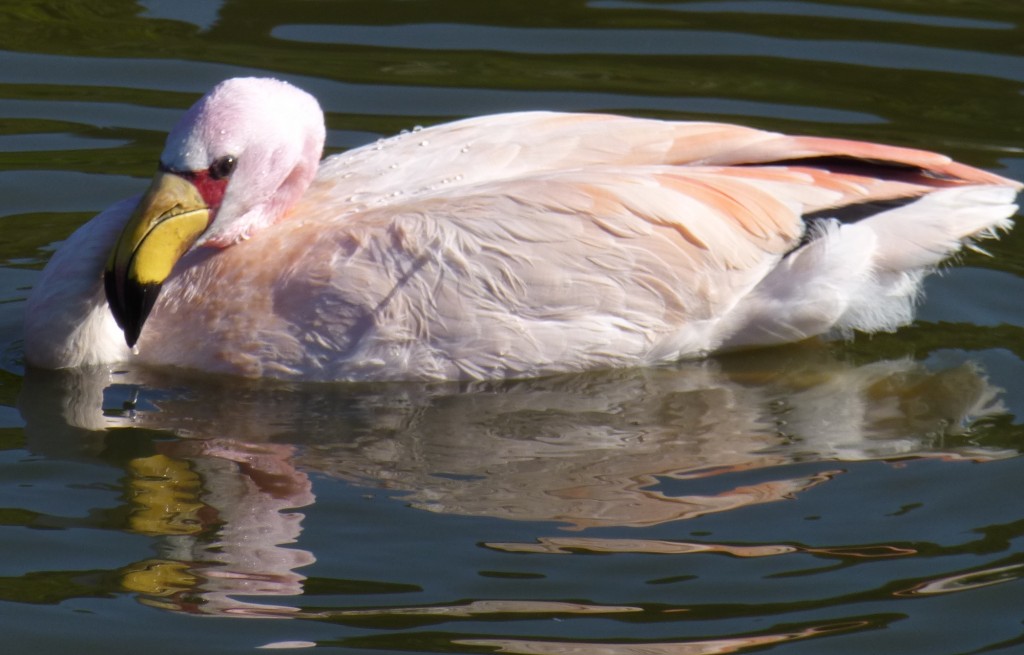
So there go people. A brief explanation of why the digital camera is a research student's best friend! So here is to another year of flamingo snippets, interesting facts and general "pink" goings on at WWT Slimbridge. I hope 2014 is a prosperous and successful year for you all.



